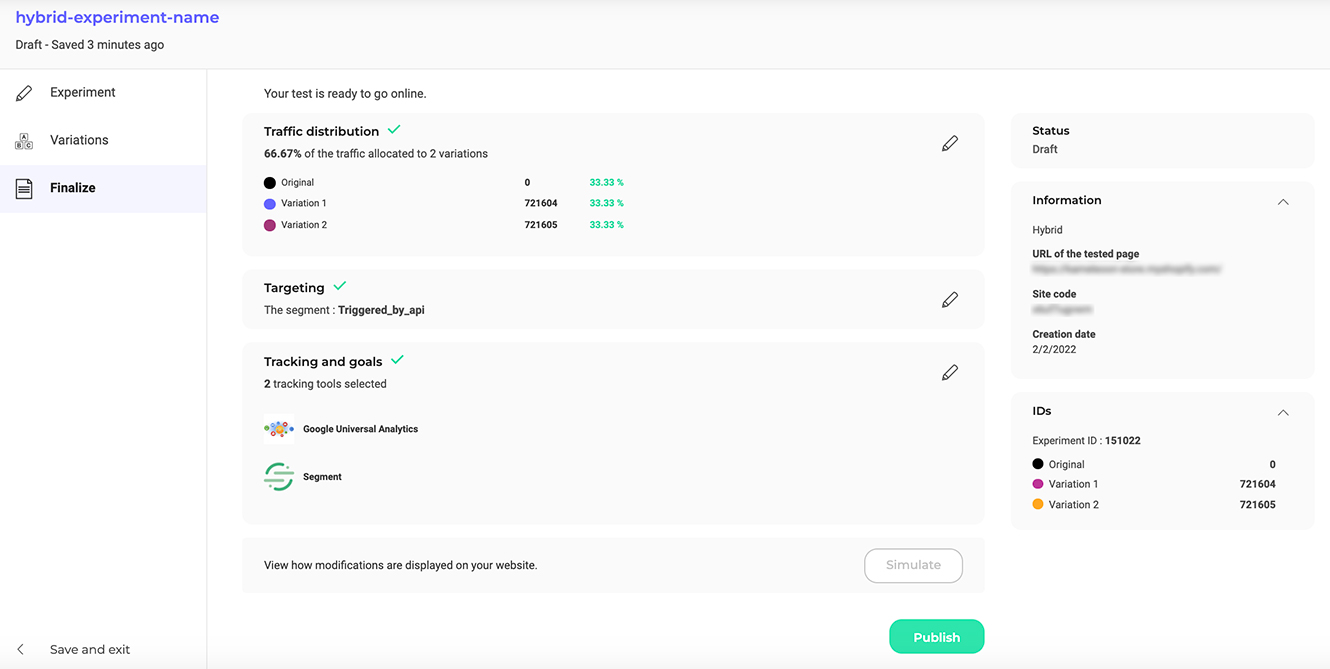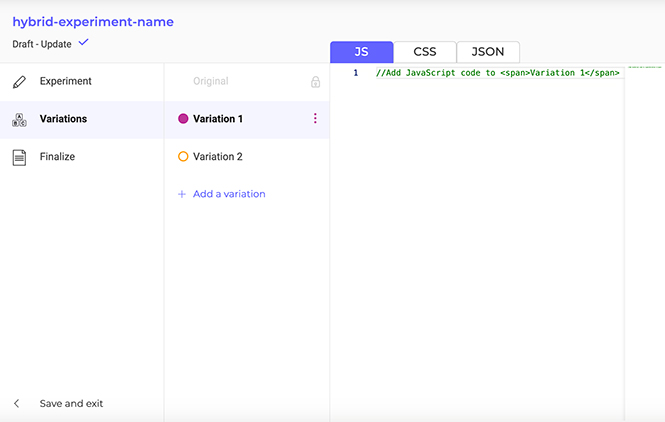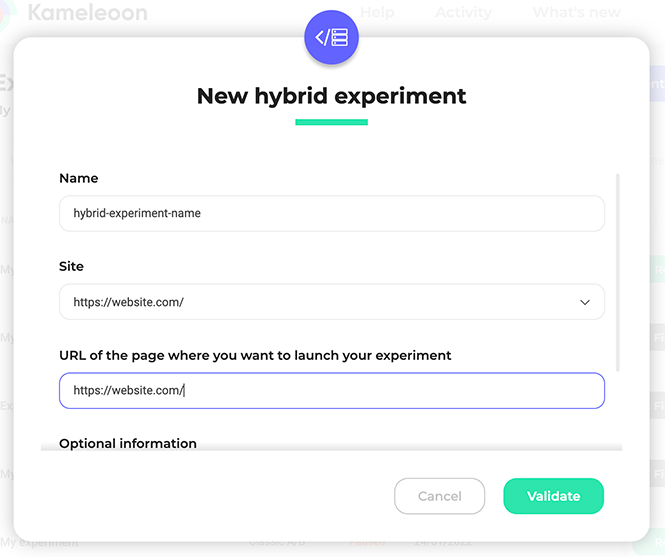
Hybrid experimentation: bringing together client and server-side testing
Kameleoon’s complete platform covers all experimentation needs - and in a two-part series we look at some of the benefits our technology innovation deliver to brands. In this post, we look at the ability to run hybrid experiments.
When it comes to experimentation there are two main approaches - client-side (normally created and run by marketers, using JavaScript technology) and server-side (led by developers and product teams, using SDKs).
Both of these deliver specific advantages, depending on your business needs. However, there is a third way - hybrid experimentation - that brings the two approaches together.
1 What is hybrid experimentation?
As the name suggests hybrid experimentation uses both client-side (JavaScript) and server-side (SDK) capabilities. For a quick explanation of the differences between these two approaches take a look at our previous blog.
Kameleoon provides a single platform for all types of A/B testing and personalization, meaning that uniquely brands can create and run hybrid experiments that bring marketers and developers together, using the same tools and without the need to integrate different products or choose between a client-side or server-side approach.
Brands can therefore focus on developing, running and reporting on their experiments and teams can collaborate seamlessly. Marketers and developers use the same platform and interface they are familiar with, so there is no overhead in terms of learning new tools or ways of working. Each team can do what they are best at as part of your overall digital strategy.
2 How does hybrid experimentation benefit brands?
There are multiple use-cases where hybrid experimentation provides business benefits - and as an increasing number of our clients adopt it, we expect this to grow over the coming months.
Running a cross-device/channel experiment for identified users
Running an experiment or personalization on an app requires server-side SDKs (iOS, Android or React native), while the website can be handled through a client-side experiment. However, in an omnichannel world, customers often switch between a brand’s app and website, making it complex to ensure that the visitor sees the same experiment or content on both. With Kameleoon it is simple to ensure that an identified user always receives the same variant of an experiment, whichever of the two channels they use, with all the results available within a single report, speeding up analysis.

Better manage tracking and reporting
Client-side tools generally enable more precise reporting and monitoring, filtering by a larger number of criteria than those on the server-side. Bringing the two together can overcome this potential issue. Developers can build the experiment code server-side with marketers then managing all the tracking of visitor engagement (using Kameleoon’s reporting or other analytics tools, such as Google Analytics) with client-side technology, without having to create a custom set-up. This allows deeper, more informed segmentation, analysis and reporting insight on the success or failure of your experiments.

Experiment across the conversion funnel
Typically a conversion funnel spans both front-end and back-end parts of your digital infrastructure. For example a bank may start the customer journey client-side on a website but as it progresses and requires more complex functionality (such as for meeting privacy regulations or handling payment), needs to switch to server-side. Previously experiments had to be handled separately, or brands were forced to only test one stage in the funnel. With hybrid experimentation developers can handle the part of an experiment that affects the structure of a page on the server-side, while marketers can still make front-end changes (such as around CTAs, colors or wording) using client-side technology, all within the same experiment.

Avoid issues with Apple Intelligent Tracking Protection (ITP)
Apple’s Intelligent Tracking Protection (ITP) 2.3 technology can dramatically affect the reliability of experimentation results from visitors using the Safari browser as it blocks all third-party storage (cookies or Local Storage) from websites. Kameleoon’s solution to this is based on a hybrid approach - it creates a server-side snippet that automatically synchronizes client-side to identify returning visitors and enable them to be served the same experiment variation, ensuring reliable results. This blog outlines the impact of ITP and how Kameleoon overcomes it for all customers.
In the second post in our series we’ll look at how Kameleoon helps overcome experimentation issues when using caching infrastructure. Check back next week to read the full article.
To learn more about deploying hybrid experimentation read our technical documentation here or speak to your Customer Success Manager.





